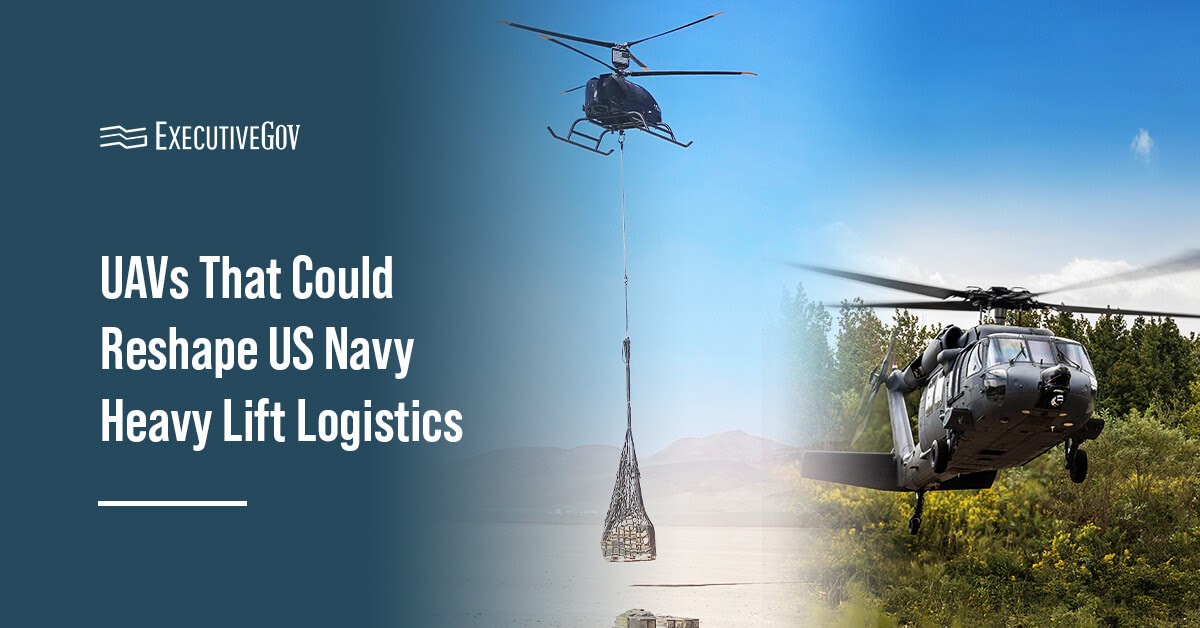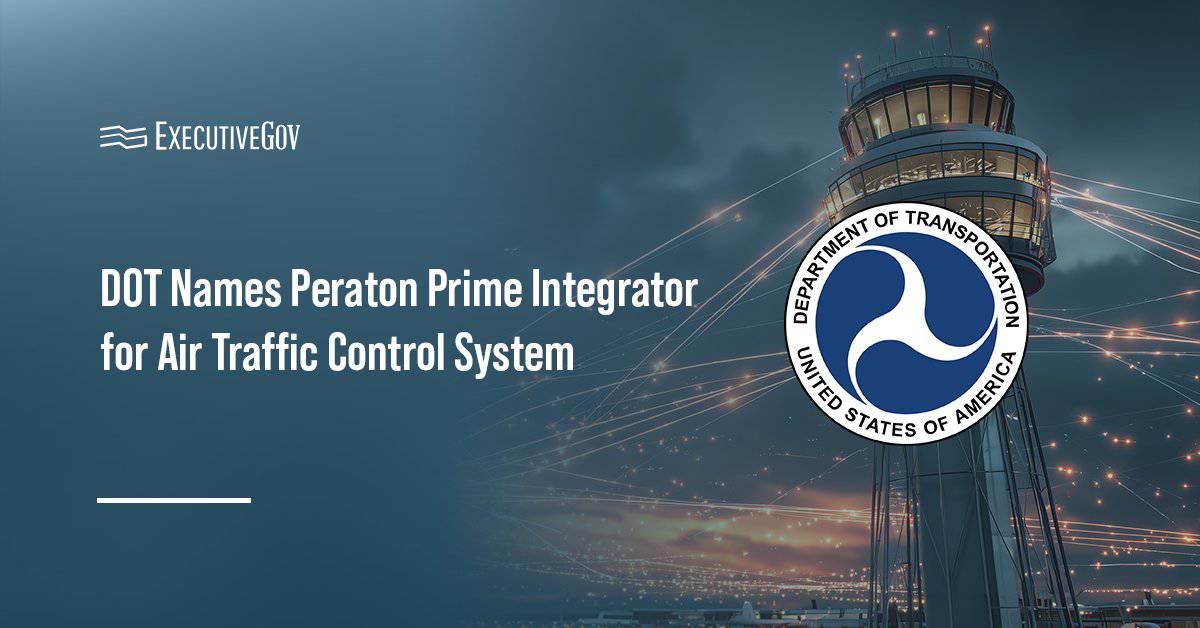The U.S. Navy, after years of testing, experimentation and demonstrations, is laying the groundwork toward a program for a heavy lift unmanned aerial vehicle that would drastically improve its logistical capability in combat.
The Navy and Marine Corps Small Tactical Unmanned Aircraft Systems Program Office, or PMA-263, is requesting information from industry for the Long Range Heavy Lift Unmanned Logistics Systems-Air, or ULS-A, program. PMA-263 is inquiring about systems capable of providing real time logistics supply distribution with payloads of at least 1,300 lbs and a minimum radius of 100 nautical miles. The system should be capable of autonomously launching from a small and confined area with autonomous recovery from the same area as the launch.
Discover the Navy’s FY 2026 spending priorities for unmanned aircraft at the Potomac Officers Club’s 2025 Navy Summit on August 31! Attend a star-studded panel discussion on Opportunities and Challenges in Delivering UXV to the Navy. Learn about experimentation priorities during a keynote address by NavalX Director Capt. Joel Uzarski. Sign up today for this elite GovCon conference and prepare your GovCon firm for success in FY 2026!
Table of Contents
Why Does the Navy Need a Heavy Lift UAV?
The Navy is inquiring about an unmanned heavy lift aircraft to sustain combat effectiveness in future wars by ensuring logistics can reach small, dispersed and vulnerable forces in denied or degraded environments without putting humans or high-value assets at risk. Other priorities include better supporting distributed maritime operations, operating in contested environments, reducing the logistics footprint and bridging capability gaps.
The Navy is wasting no time preparing contract awards for this effort. Naval Air Systems Command, or NAVAIR, is considering awarding an other transaction agreement for ULS-A in FY 2026.
Let’s dive into the potential offerors for this highly-anticipated program.
Phenix Solutions Ultra 2XL
Phenix Solutions of Oregon has developed a heavy-lift dual coaxial rotor UAV that is capable of carrying more than 1,300 lbs, a company official told ExecutiveGov. The platform can use an enclosed payload container or a sling to carry its payload beneath the aircraft.
The Ultra 2XL can carry varying payload amounts depending on fuel levels and total payload. The Ultra 2XL can perform ship-to-ship, ship-to-shore and shore-to-shore logistics missions.
The company is promoting the Ultra 2XL as providing an existing and proven Technology Readiness Level-8 vehicle designed for use as a tactical unmanned resupply aircraft. The platform can perform multiple military and civilian missions beyond visual line of sight and its mission modules can be quickly reconfigured in the field if mission requirements change.
Phenix Solutions was awarded the Next Generation Logistics Unmanned Aircraft System Phase I contract specifically focusing on heavy lift aircraft, vertical replenishment logistics and ship-to-ship and ship-to-shore cargo delivery. Phenix was also selected as an original equipment UAS manufacturer for an important U.S. Marine Corps program—Medium Air Resupply Vehicle-Expeditionary Logistics, or MARV-EL, Phase I, which has similar requirements to ULS-A.
The company is in the process of submitting for the next phase of MARV-EL and expects a contract decision to be made by the end of the year.
Near Earth Autonomy RUC-60
Near Earth Autonomy is developing an optionally-piloted aircraft based on the Sikorsky UH-60 Black Hawk helicopter that has been in service with the DOD for generations. The platform is being promoted as performing logistics missions in contested environments and can carry 2,500 lbs 125 n miles, a company official told ExecutiveGov.
Near Earth Autonomy believes retrofit kits are the most efficient way to rapidly address the need by upgrading existing aircraft into uncrewed logistics solutions. The company is also developing retrokit solutions for the AgustaWestland AW139, the Kaman KARGO UAV and the TRV-150 quadcopter.
The Army in April awarded Near Earth Autonomy a $15 million contract to retrofit UH-60Ls with its advanced autonomy kits to make the helicopters uncrewed and high-tempo logistics aircraft. The initiative creates a repeatable and scalable process and allows the Army to avoid long acquisition timelines and unlock new capabilities from legacy aircraft.
Near Earth Autonomy highlights its Captain deterministic autonomy architecture as central to this program. Designed for performance in complex and degraded environments, Captain enables safe flight and hazard avoidance without needing onboard crew, a remote pilot or a continuous data link. Near Earth Autonomy is leveraging a modular open systems approach, or MOSA, for this UH-60L retrofit contract.
The Army will work with Near Earth Autonomy to develop new operational procedures for autonomous logistics by performing a series of autonomous flights. This should lead to a mature, mission-ready product. Near Earth Autonomy began working toward an unmanned Black Hawk in 2021.
Sabrewing Aircraft Rhaegal
Sabrewing Aircraft is developing a regional cargo unmanned aircraft capable of carrying up to 5,400 lbs of payload over 1,000 n miles in vertical takeoff and landing, or VTOL, mode. If a customer prioritizes larger payload capacity for the Rhaegal, the horizontal runway takeoff and landing permits up to 10,000 lbs of payload, according to Sabrewing’s website.
The Rhaegal achieved its first hover flight in 2022 while lifting 829 lbs. The company touts the Rhaegal’s ability to use sustainable aviation fuel to reduce carbon emissions by up to 80 percent.
Sabrewing has landed a number of contracts, including one from Ameriflight, who intends on purchasing 35 Rhaegals. Ameriflight intends to use the platform to enter new business opportunities in distribution center logistics as part of a diversified aviation services business model.
Piasecki Kaman KARGO
Piasecki Aircraft made a huge splash earlier this year when it acquired the KARGO heavy lift quadcopter UAV from Kaman Air Vehicles, developer of the K-Max TITAN heavy lift helicopter. The KARGO is a medium-lift, autonomous UAV that has been demonstrated to both the U.S. Marine Corps and Army for its VTOL cargo capabilities. The platform has a payload capacity of 1,000 lbs with a range of up to 500 n miles, according to Defense News.
The KARGO is designed to fit in a standard shipping container and can be unloaded and operated by as few as two people. Kaman, while owning the KARGO UAV program, received an initial $12 million contract from the USMC for MARV-EL and has two existing full-scale prototypes, according to a company statement.
Dig into cutting-edge aviation technologies at the Potomac Officers Club’s 2025 Navy Summit on August 26! Strike up new partnership opportunities with other leading GovCon titans. Check out offerings from leading firms such as SAIC, Seekr and SandboxAQ. All in a supportive, collaborative environment. Secure your seat now for this prestigious GovCon event and boost your bottom line!






